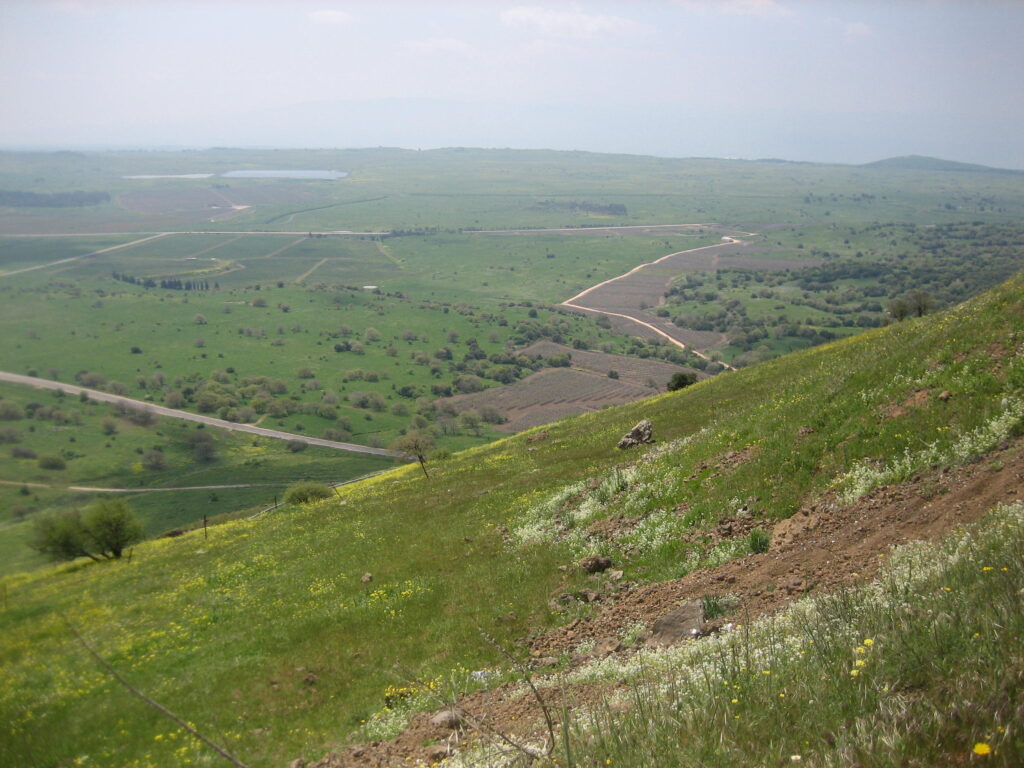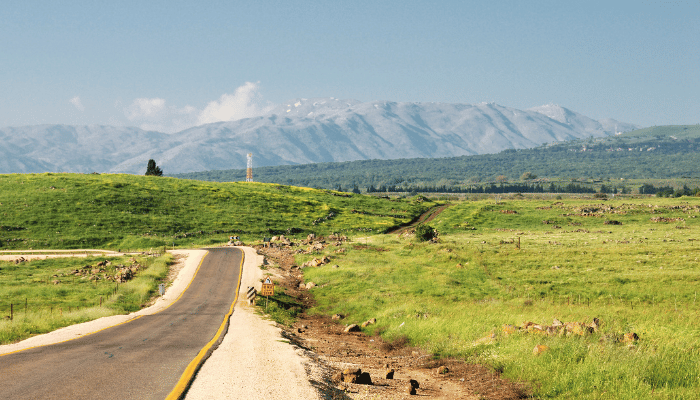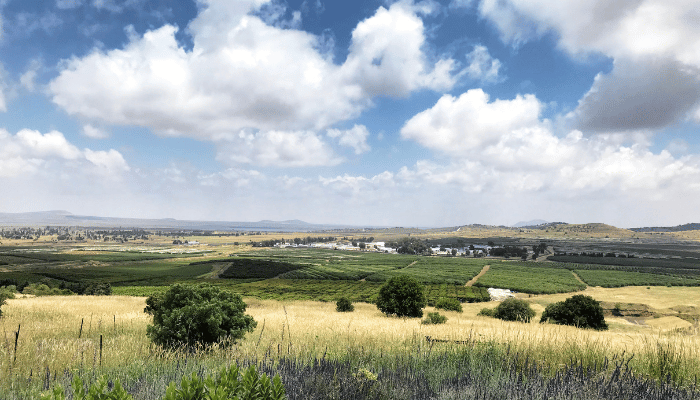Golan Heights Tours

Golan Heights Tours: A Journey Through History and Nature
The Golan Heights, a volcanic plateau straddling the borders of Israel, Syria, and Lebanon, is a land etched with history and natural beauty. Its rugged terrain, dotted with dormant volcanoes and basalt rock formations, offers a stark contrast to the fertile valleys below. But beyond the dramatic landscapes, the Golan holds complex political and cultural narratives, making it a destination that stirs the soul as much as it captures the eye.
My journey began in the Israeli town of Katzrin, where the modern face of the Golan thrives. Here, amidst vineyards and orchards, Druze villages weave ancient traditions into contemporary life. A visit to the Golan Heights Winery unveils the region’s unique terroir, while a stop at the Druze Heritage Center offers a glimpse into their rich history and resilience.
Further north, the land transitions to its more wild and untamed state. Winding roads navigate through volcanic fields, each crater a silent testament to the Earth’s fiery past. At Mount Bental, a former Syrian military position overlooking the Quneitra Valley, history comes alive. Abandoned bunkers and observation posts stand as stark reminders of past conflicts, offering a sobering perspective on the region’s complexities.

Exploring Ancient Ruins and Natural Wonders
But the Golan isn’t all about war and strife. Nested within the basalt valleys lies Gamla, a UNESCO World Heritage Site. This ancient Jewish city, destroyed by the Romans in the 1st century AD, offers a glimpse into life during the Second Temple period. Exploring its ruins, you can almost hear the echoes of bustling marketplaces and religious ceremonies.
For nature enthusiasts, the Golan is a paradise. Lush hiking trails snake through basalt canyons, leading to cascading waterfalls like Majrasa and Sh’ar Yashuv. On a clear day, the peak of Mount Hermon, crowned with snow, dominates the skyline, beckoning adventurous souls for a challenging climb.
Savoring Local Cuisine and Understanding Complex Realities
For foodies, the Golan’s bounty extends beyond its stunning scenery. Druze restaurants offer culinary delights like manaqish (flatbread with toppings) and labneh (strained yogurt), while wineries, like Chateau Golan and Golan Winery, provide the perfect opportunity to sample local vintages paired with breathtaking views.
However, it’s important to acknowledge the sensitive political climate surrounding the Golan Heights. The territory, captured by Israel during the Six-Day War in 1967, remains a disputed land with complex claims from Syria and the international community. While exploring the Israeli-controlled side, it’s crucial to be mindful and respectful of the diverse narratives that shape the region.

Tours in Golan Heights: Where Nature and History Intertwine
Traveling through the Golan Heights is not just a journey through a stunning landscape; it’s an exploration of history, culture, and geopolitical realities. It’s a chance to connect with the land, its people, and the stories that weave through its past, present, and future.
Here are some additional tips for your Golan Heights adventure:
- Do your research: Be aware of the political sensitivities and consider contacting tour operators specializing in responsible tourism.
- Embrace the outdoors: Hike, bike, or even kayak your way through the diverse landscapes.
- Support local communities: Shop at Druze markets, stay in family-run accommodations, and savor local cuisine.
- Engage with history: Visit museums, explore archaeological sites, and listen to local stories.
- Be respectful: Dress modestly when visiting religious sites, and be mindful of sensitive areas.
Remember, the Golan Heights is a region steeped in history and complexity. By approaching your visit with an open mind and a respectful heart, you’ll discover a land that will leave an indelible mark on your soul.
FAQ
Are the Golan Heights worth visiting?
- Stunning natural beauty: The Golan Heights boast a volcanic landscape with mountains, waterfalls, canyons, and basalt rock formations. Some popular spots include Mount Hermon, the Banias Nature Reserve with its waterfalls, and the Sa'ar Nature Reserve.
- Rich history and culture: The Golan Heights have been inhabited for centuries and have seen many different cultures pass through. You can visit archaeological sites, ancient synagogues, and Crusader fortresses. Some noteworthy historical sites include the Nimrod Fortress, the Gamla Nature Reserve with its ancient city ruins, and the Umm Al Kanatir Synagogue.
- Outdoor activities: The Golan Heights are a great place for hiking, biking, swimming, horseback riding, camping, jeep safaris and even skiing in the winter at the Mount Hermon Ski Resort.
Does anyone live in Golan Heights?
The Golan Heights does have a population, although it's important to acknowledge the complex political situation involved.
Total population: Estimates vary, but it's generally within the range of 40,000-50,000 people.
Ethnicities and citizenships: The population comprises two main groups:
- Druze: Around 20,000-25,700 people, mostly Syrian Arab Druze who remained after the 1967 war. Some have obtained Israeli citizenship, though estimates suggest only about 20% (around 4,300) have done so as of 2022.
- Israeli settlers: About 25,000 Israeli citizens living in settlements established since the war. The Israeli government aims to double this number in the coming years.
Additional facts:
- Prior to the 1967 war, the Golan Heights had a larger and more diverse population, including Syrian Arabs, Palestinian refugees, and smaller groups like Alawites.
- The Druze community in the Golan Heights remains divided on issues like Israeli annexation and citizenship.
Visit the Golan Heights on our 7 night Highlights of Israel Tour or Heritage of the Holyland Tour or Bibleland Tour
Things to do in Israel: Things to do in Eilat | Things to do in Jerusalem